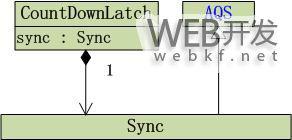Python基于多线程实现ping扫描功能示例
本文实例讲述了Python基于多线程实现ping扫描功能。分享给大家供大家参考,具体如下:
# -*- coding:utf-8 -*-
#! python2
import subprocess
from Queue import Queue
import threading
class Pinger(object):
def __init__(self, ip_list, thread_num=2):
self._ip_list = ip_list
self._thread_num = thread_num
self._queue = Queue(len(ip_list))
def ping(self, thread_id):
while True:
if self._queue.empty():
break
addr = self._queue.get()
print 'Thread %s: Ping %s' % (thread_id, addr)
ret = subprocess.call('ping -c 1 %s' % (addr),
shell=True,
stdout=open("/dev/null", 'w'),
stderr=subprocess.STDOUT)
if ret == 0:
print '%s: is still alive' % addr
else:
print '%s: did not respond ' % addr
self._queue.task_done() #unfinished tasks -= 1
def run(self):
for ip in self._ip_list:
self._queue.put(ip) #unfinished_tasks += 1
print '---------------------task begin------------------'
for i in range(self._thread_num):
thrd = threading.Thread(target=self.ping, args=(i + 1,))
#thrd.setDaemon(True)
thrd.start()
self._queue.join() # 主线程一直阻塞,一直等到Queue.unfiinshed_tasks == 0
print '---------------------task done-------------------'
更多关于Python相关内容感兴趣的读者可查看本站专题:《Python进程与线程操作技巧总结》、《Python Socket编程技巧总结》、《Python数据结构与算法教程》、《Python函数使用技巧总结》、《Python字符串操作技巧汇总》、《Python入门与进阶经典教程》及《Python文件与目录操作技巧汇总》
希望本文所述对大家Python程序设计有所帮助。
以上是 Python基于多线程实现ping扫描功能示例 的全部内容, 来源链接: utcz.com/z/358761.html








